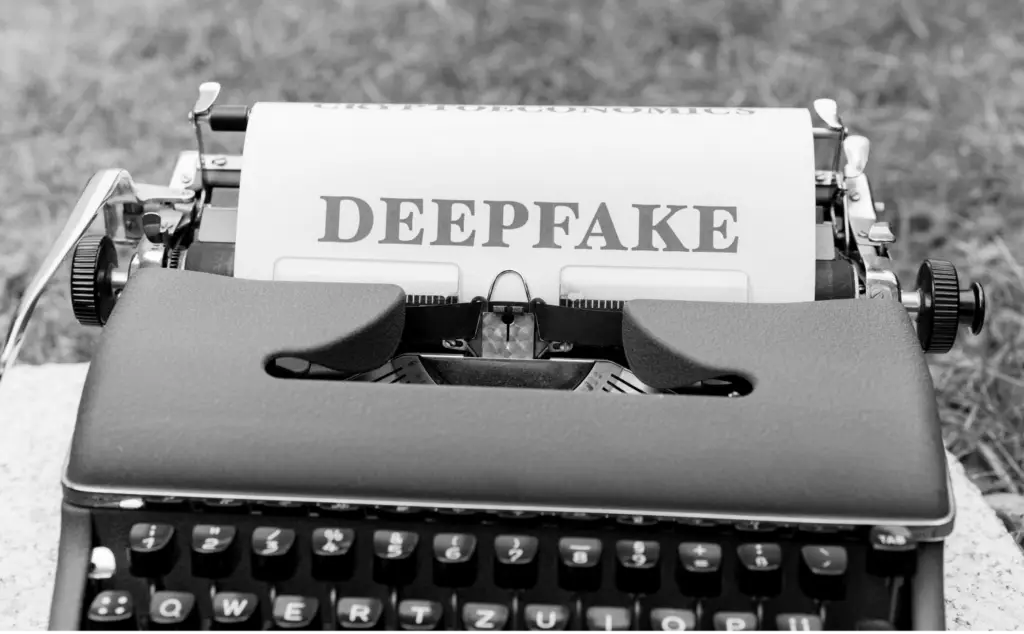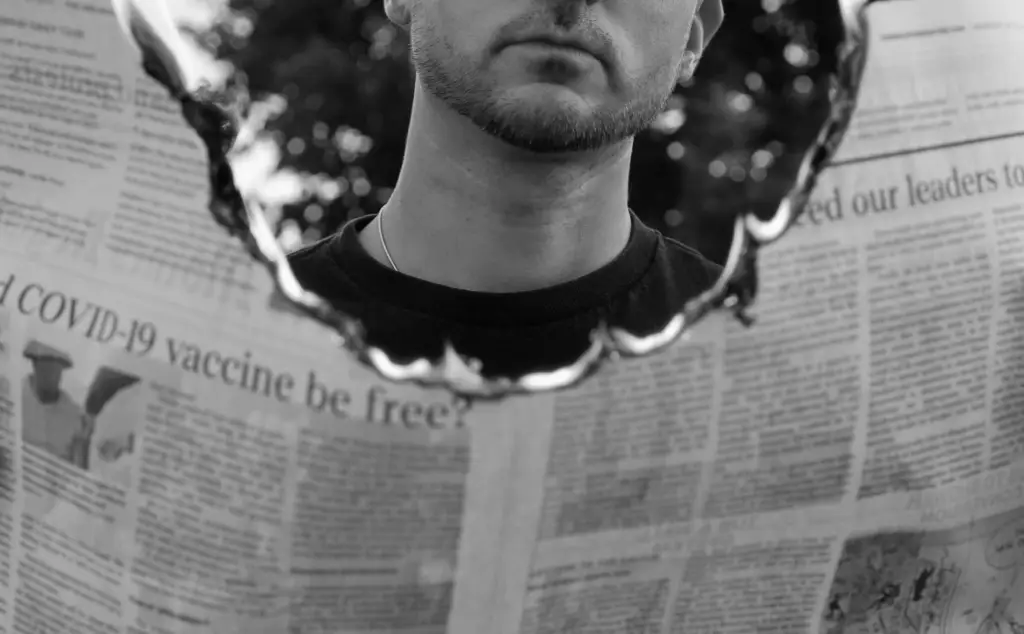In a world where the boundaries between reality and digital manipulation blur, Deepfakes pose a growing threat. In this blog article, we take a look at the world of Deepfakes, their various variants, their impact on victims, and possible countermeasures.
What is a Deepfake?
A Deepfake is a manipulated digital medium where advanced AI technologies are used to alter the appearance or sound of a person in images, videos, or audio recordings. The result is deceptively realistic content that is often challenging to distinguish from the genuine article.
Recent examples include the spread of intimate and personal deepfakes of Taylor Swift on the platform «X» (formerly Twitter). This case typifies the targeting of high-profile celebrities and industry leaders, often with malicious intent. Deepfaked material spreads far and wide on social media, making it hard to trace, hard to monitor, and even harder to eliminate before the damage is done.

Nevertheless, Deepfakes extend beyond targeting well-known VIPs, stars, and celebrities; they also pose a significant threat in critical business sectors. These sophisticated manipulations are employed to impersonate key decision-makers or trusted consultants, serving as a conduit for the distribution of scams, promotion of online fraud, and deception of both business partners and consumers. Notably, leading financial institutions have documented instances where the voices of key employees were replicated in fraudulent phone calls. In such scenarios, the very essence of a business relationship—trust and reputation—is at stake. The repercussions are far-reaching, with cases of misinformation spreading even impacting the valuation of company stocks. Understanding the different types of Deepfakes targeting your business helps you arm yourself with the insights to take action and protect your brand.
Different types of Deepfake
Face Swapping
As the name suggests, this variant involves the exchange of faces in videos. Essentially, AI software compiles real footage of a person’s face, then superimposes the features, movement, and lighting onto completely new footage. A prominent example is the application «DeepFaceLab,» integrates faces into existing videos, creating seemingly realistic scenes.
Voice Cloning
This involves the imitation of voices, again by compiling and computing a library of genuine vocal sounds. A notable application is the OpenAI technology that creates artificial voices that are hardly distinguishable from the original voice. This technique often dovetails with Text to Speech Deepfakes, where hackers simply type in what they wish the voice clone to say, and the software draws the required sounds and stitches them together fluently.
Altered Context Deepfakes
A descendant of traditional editing techniques, this strategy involves subtle tweaks to context or content that completely change viewer perceptions of a given clip. Deep learning models process existing footage, then manipulate scenes, words, and objects to change the meaning. Scammers may substitute one product for another to create Deepfaked advertisements, or rearrange words to change opinions from positive to negative.
Each of these tactics comes with weaknesses, and some basic Deepfakes give themselves away with poorly-mapped mouths or noticeable jump cuts. However, as the technology advances, fake and real increasingly overlap- you may have already seen Deepfake footage without even noticing.
The spread of Deepfakes
Scammers and pranksters often disseminate Deepfakes through social media platforms, video hosting sites, messaging services, and even in news sources. When a Deepfake video goes viral in the space of a morning, the news spreads faster than the victim and their team can react. This creates disastrous results with incalculable damage to mental and financial wellbeing, harming individuals and brands alike.

The impacts on victims
The impacts of Deepfakes on their subjects can be devastating. Victims could be falsely portrayed in videos or audio files, leading to reputation damage, phishing attacks, and even legal consequences. When the public lose faith in authentic information, victims struggle to set the record straight.
For example, a politician was misrepresented through a Deepfake video, where she seemingly made scandalous remarks. This led to a substantial loss of trust and reputation damage, and the loss of her election campaign.
Another example is in the realm of brand protection. Companies could become victims of Deepfakes by creating fake advertising campaigns that portray the brand in a negative light. This scares away customers, partners, and even prospective employees, in a spiral of financial and reputational damage to the business.
Legal steps to tackle Deepfakes
Legislative Regulations
The threat of Deepfakes necessitates legal action, as legislative bodies around the world are already realizing. China enacted a series of laws in 2019 compelling content creators to disclose any Deepfake usage, and other nations have since followed suit. In 2020, South Korea criminalized the intentional sharing of Deepfakes that harm the public, and the UK laid out anti-Deep-Fake laws specifically around faked pornography in 2023. However, citizens of other countries and continents still remain legally unprotected from these scams and impersonations.
Lawsuits and Prosecution
Deepfakes represent a complete violation of autonomy and intellectual property, and scammers often create them to support even more crimes. As slow-moving legislative bodies struggle to keep up with the evolving technology, victims look to the courts. Victims can file civil lawsuits to claim damages and curb the spread of fake content. In November 2023, the actress Scarlett Johansson began legal proceedings against a company that Deepfaked her voice and her likeness to promote their platform. The AI firm allegedly generated her image and voice to demonstrate how realistically its users could Deepfake a celebrity of their choice.

Police Intervention
In some cases, law enforcement agencies could intervene to criminally prosecute the creators of Deepfakes, especially if laws are violated. Many expect that the recent Deepfake case around Taylor Swift will precipitate a criminal investigation and legal suits, while further catalyzing international legislation. In the meantime, businesses and VIP stakeholders must act fast to protect themselves from the next wake of attacks.
The Fight against Deepfakes: EBRAND solutions
Fortunately, EBRAND solutions specialize in detecting, monitoring, and eliminating infringements from the internet. These include digital attacks and infringements, both to companies and individuals, and the tools dovetail effectively in the fight against Deepfakes. While Deepfake techniques use AI technology to improve their imitations, EBRAND’s Digital Risk Protection platform also uses deep learning to identify attacks across 1,000+ online channels and data sources. Deepfakes spread fast online, but comprehensive risk protection lets you detect and mitigate infringements at scale, from web content to social platforms and even the dark web, across text and image formats.
In particular, the VIP and Executive Protection solution packages the tools you need to defend yourself against scams, reputational damage, and theft of your intellectual property. These services include:
Detection Technologies
We invest in advanced detection technologies for Deepfakes to stop the spread of fake content.
Monitoring and Early Warning Systems
Our platform implements smart systems that monitor different channels on the internet and provide early warnings about potential threats from Deepfakes.
Legal Advice and Support
EBRAND offers comprehensive legal resources and advice to brands and public figures to respond appropriately to Deepfakes and initiate legal actions.
Conclusions
Deepfakes pose a serious threat to personal rights and brand protection. Through the combination of technological innovations, monitoring, and legal measures, brands and individuals can preserve their integrity online. Technical solutions, like EBRAND Digital Risk Protection, give Deepfake targets control over their image rights, using AI for good rather than harm. Deploying advanced solutions helps brands and public figures protect themselves, and their audiences, while making the internet a safer place for all.


